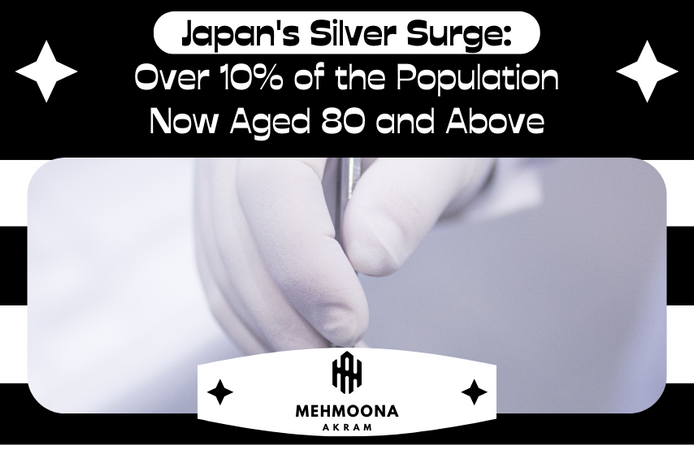
Introduction
Japan, renowned for its rich cultural heritage and technological prowess, is facing a demographic shift of unprecedented proportions. In recent years, the Land of the Rising Sun has witnessed a remarkable transformation in its population composition. More than 10% of Japan’s population is now aged 80 or above, marking a significant milestone in the nation’s demographic history. This demographic shift brings both opportunities and challenges that will shape Japan’s social, economic, and healthcare landscapes in the decades to come.
The Aging Population Trend
Japan has long been known for its aging population, a phenomenon primarily driven by a combination of factors such as increased life expectancy and declining birth rates. However, the fact that over 10% of the population is now 80 years old or older is a noteworthy development. As of my last knowledge update in September 2021, Japan had already become one of the world’s oldest nations, with approximately 28% of its population aged 65 and older. This trend has only intensified since then.
Contributing Factors
Several factors have contributed to this remarkable increase in Japan’s octogenarian and nonagenarian population:
- Increased Life Expectancy: Advances in healthcare and improved living conditions have led to a significant increase in life expectancy in Japan. The country consistently ranks among the highest in life expectancy worldwide.
- Declining Birth Rates: Japan’s birth rates have been declining for decades, resulting in a smaller younger population. This demographic shift has left a larger proportion of the population in older age groups.
- Aging Baby Boomers: The post-World War II baby boom in Japan has also contributed to the growing elderly population. As this generation continues to age, the number of people aged 80 and above has increased.
Impact on Society
The increasing number of elderly citizens in Japan has both positive and negative implications for the country.
Positive Aspects:
- Experienced Workforce: Japan can tap into the vast experience and knowledge of its older population. Many seniors are staying in the workforce longer, contributing to the economy and sharing their expertise.
- Economic Opportunities: The aging population presents opportunities for businesses catering to the elderly market, including healthcare services, retirement communities, and specialized products.
Challenges:
- Healthcare Costs: An aging population places immense pressure on the healthcare system, leading to rising healthcare costs. The government must invest in healthcare infrastructure to meet the growing demand.
- Social Welfare: Japan faces challenges in providing social welfare services, including pensions and long-term care, for its elderly citizens.
- Labor Shortages: With a smaller younger workforce, there are concerns about labor shortages in various sectors of the economy.
- Economic Growth: A shrinking and aging population can have long-term implications for economic growth, potentially affecting the country’s competitiveness on the global stage.
Conclusion
Japan’s demographic shift, with over 10% of its population now aged 80 and above, is a clear indicator of the challenges and opportunities that lie ahead. While it brings the wisdom and experience of a senior population, it also places significant demands on healthcare, social welfare, and the workforce. How Japan navigates these challenges and leverages the strengths of its elderly population will shape the country’s future in the years to come. As other nations grapple with similar demographic transitions, Japan’s experience serves as a valuable case study for addressing the complexities of an aging society.



